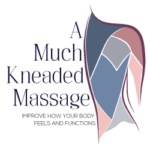Where will my massage or bodywork session take place?
Your massage or bodywork session will take place in a warm, comfortable, quiet room. Soft music may be played to help you relax. You will lie on a table especially designed for your comfort.
Must I be completely undressed?
Most massage and bodywork techniques are traditionally performed with the client unclothed; however, it is entirely up to you what you want to wear. You should undress to your level of comfort. You will be properly draped during the entire session.
Will the practitioner be present when I disrobe?
The practitioner will leave the room while you undress, relax onto the table, and cover yourself with a clean sheet and blanket.
Will I be covered during the session?
You will be properly draped at all times to keep you warm and comfortable. Only the area being worked on will be exposed. A sheet will be covering all private areas at all times according to laws and regulations set forth by the state of CA. Any exposure of private areas either by the therapist or client can result in the termination of your massage session. Your comfort and safety as well the the comfort and safety of the therapist are very important.
What parts of my body will be massaged?
A typical full-body session will include work on your back, arms, legs, feet, hands, head, neck, and shoulders.
What should I do during the massage or bodywork session?
Prior to the massage, feel free to ask the practitioner any questions about the technique or the upcoming session. During the massage, make yourself comfortable. The practitioner will either gently move you or tell you what is needed throughout the session (such as lifting your arm). Many people just close their eyes and completely relax, communicating if/when they need more or less pressure, another blanket, or anything else relevant to the session. If you have any questions regarding the session or about the particular technique you are receiving, feel free to ask.
Are there any medical conditions that would make massage or bodywork inadvisable?
Yes. That’s why it’s imperative that, before you begin your session, the practitioner asks general health questions. It is very important that you inform the practitioner of any health problems or medications you are taking. If you are under a doctor’s care, it is strongly advised that you receive a written recommendation for massage or bodywork prior to any session. Depending on the condition, approval from your doctor may be required.
FAQ about Cupping Therapy
What is cupping therapy?
Cupping massage is a therapy that has been used all over the world for several hundred years. Negative pressure is used to pull the tissues up into the “bell” of the cup being used. The cup is then glided over the surface of the skin to relieve tension in the tissues. Cups can be left in one area for a period of time to affect muscles and tissues deeply. This is called stationary cupping and often results in the appearance of the dark circles often associated with cupping.
What does cupping do?
The negative force from the suction of the cup pulls tissues up. This promotes increased blood flow throughout the tissues being worked on. The upward pull softens the tissues and decreases tension in the muscles.
What are the marks left from cupping?
The discoloration that happens during cupping is from deeper work being done to areas of tension or injury recovery. The marks can vary in color depending on the amount of stagnation or tension in that area. The discoloration is left behind from stagnation of toxins, blood, and lymph that has been pulled to the surface of the skin. Dehydration, injuries, and immobility can affect how dark the coloration can be.
How long do the marks last?
The cupping spots can last between 2 hours and 2 weeks depending on your hydration, movement and the severity of the mark.
Do the marks hurt?
The cupping marks might look like giant bruises, but those areas are not damage due to trauma. Bruising is a result of a trauma to the tissue. The marks do not hurt. The muscle might be a little sore from the deep tissue work, but nothing more than what you would feel from a good work out.

